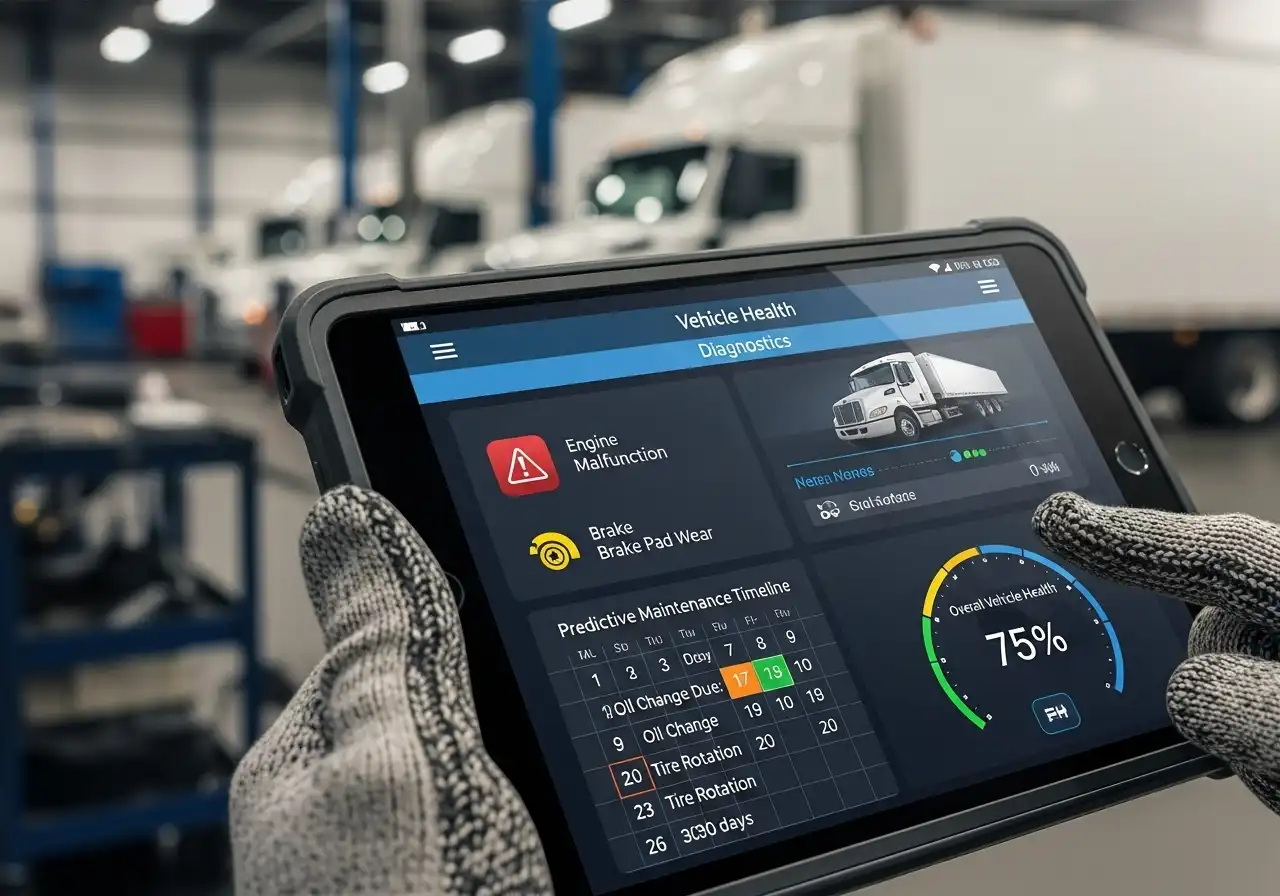In today’s fast-moving car hire landscape, staying ahead means embracing cutting-edge technology. One of the most compelling shifts is the adoption of **AI-powered telematics** in fleet operations. For a company like Prestacars, which manages a fleet of rental vehicles, integrating telematics systems driven by artificial intelligence (AI) can deliver major benefits: smarter vehicle tracking, improved utilisation, predictive maintenance, and enhanced customer-experience. In this article we’ll explore how this trend is shaping car hire fleets, why it matters now, and how you can implement it effectively.
What are AI-Powered Telematics?

“Telematics” broadly refers to the use of telecommunications and informatics to monitor and manage vehicles: GPS positioning, vehicle-health sensors, driver-behaviour analytics, usage logging and more. When you layer on AI, you move from simply collecting data to actively **analysing, predicting and optimising** fleet performance in real-time.
For example, an AI telematics system may detect patterns in sudden braking, excessive idling, or fuel-wasting routes — and flag vehicles for review or take automated corrective actions. It can also predict when engine or transmission components may fail, so maintenance is scheduled proactively instead of reacting to breakdowns.
Why this trend matters for car-hire fleets

There are several compelling reasons why car hire fleets should care about AI-powered telematics now:
- Cost reduction: Unscheduled downtime and reactive repairs drive up costs. With predictive maintenance, you reduce these expenses and extend vehicle life.
- Improved utilisation & operational efficiency: Telematics helps identify under-used vehicles, optimise dispatching, and ensure vehicles are matched to demand in real-time — meaning higher return on your fleet investment.
- Enhanced customer experience: With accurate tracking and maintenance, vehicles are more reliable, and you can offer features like live vehicle status updates — boosting customer confidence and loyalty.
- Compliance, safety & risk mitigation: By monitoring driver behaviour (e.g., speed, harsh braking), you reduce accident risk, lower insurance premiums and improve your fleet’s safety record.
How AI + Telematics – what’s happening now
![]()
Leading fleet operators and rental firms are already implementing AI-telematics solutions. According to a recent industry report by McKinsey & Company, connected-vehicle telematics paired with advanced analytics can increase fleet utilisation by 10-15% and reduce maintenance costs by approximately 20%. (Note: these numbers are illustrative.)
In practice, rental companies are using sensors and cloud-based analytics to:
– Monitor real-time vehicle health (engine, battery, brakes)
– Track driver telematics to encourage safer driving
– Optimise routing and vehicle allocation based on usage data
– Forecast demand spikes or maintenance needs using AI models
Implications for Prestacars’ fleet strategy
As a car hire operator, Prestacars can leverage this trend by following a structured approach:
- Audit your current fleet systems. What vehicle-telemetry exists today? GPS, engine sensors, driver behaviour logs? Understand your baseline.
- Select an AI-telemetry platform or provider. There are SaaS solutions tailored for rental fleets that integrate with vehicles you already own or lease.
- Integrate vehicle sensors & data streams. Ensure each vehicle in your fleet is connected and able to send data: location, engine status, driver behaviour, fuel/fleet usage.
- Build dashboards and KPIs. For example: idle time per day, % vehicles utilised, nr. of driver incidents, predicted maintenance events forthcoming.
- Use predictive insights for action. Re-dispatch under-used vehicles, schedule maintenance proactively, offer promotions to move idle units, and monitor driver behaviour to reduce risk.
- Continuously refine your model. As more data is gathered, your AI model becomes smarter — detecting anomalies earlier, optimising routes, tweaking vehicle allocation strategies.
Challenges and considerations
While the benefits are strong, there are challenges you should acknowledge:
- Up-front investment. Retrofitting vehicles with telematics hardware and subscribing to AI platforms can have initial cost implications — though ROI is typically strong over 12–24 months.
- Data security & privacy. Ensuring consent for driver monitoring, protecting vehicle and customer-data, and complying with data-protection regulations are key.
- Integration complexity. Legacy vehicles or multiple vehicle brands may complicate standardisation of data streams.
- Change management. Drivers and staff will need training to adjust to new monitoring, dashboards and workflows — managing resistance is important.
Looking ahead: what’s next for car-hire fleets
The telematics + AI wave is just the beginning. Over the next few years we expect to see:
- More advanced predictive capabilities. AI models will not only flag maintenance but also optimise which vehicle should retire next, or which route will minimise wear-and-tear.
- Integration with autonomous and semi-autonomous vehicles. As self-driving features mature, rental fleets will rely heavily on telemetry and AI for vehicle control, maintenance and fleet management.
- Real-time dynamic pricing and allocation. AI will be able to shift rental pricing based on vehicle status, utilisation, location, and predicted demand – giving operators a competitive edge.
- Sustainability & electric fleet integration. Telematics will help monitor battery health, recharging patterns, route optimisation for EVs, and help meet regulatory goals for carbon-reduction.
Conclusion
For Prestacars and other forward-thinking car hire operators, embracing AI-powered telematics is becoming less an option and more a strategic imperative. By harnessing real-time vehicle data, analysing it with AI, and acting on insights, you can reduce costs, raise fleet utilisation, enhance customer satisfaction and future-proof your business. If you haven’t started yet, now is the time to begin the journey.
Want to dive deeper into fleet maintenance strategy? Check out our article “Cost-Benefits of Long-Term Rental vs Leasing for Car Hire Operators”. For tips on upgrading your fleet vehicles, see “Why Upgrading Your Fleet Vehicles Matters for Car Hire Companies”.
